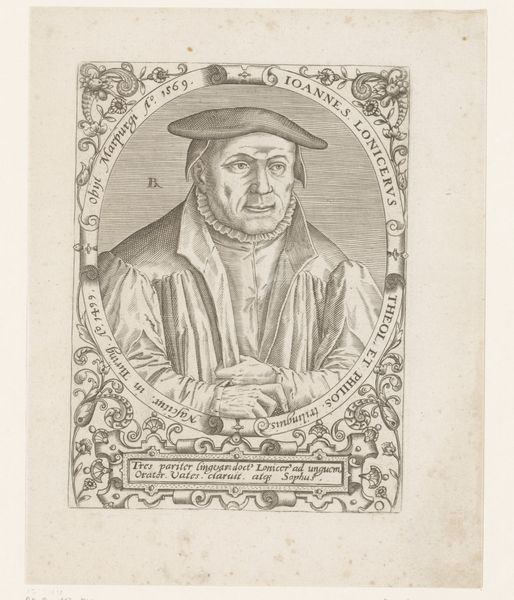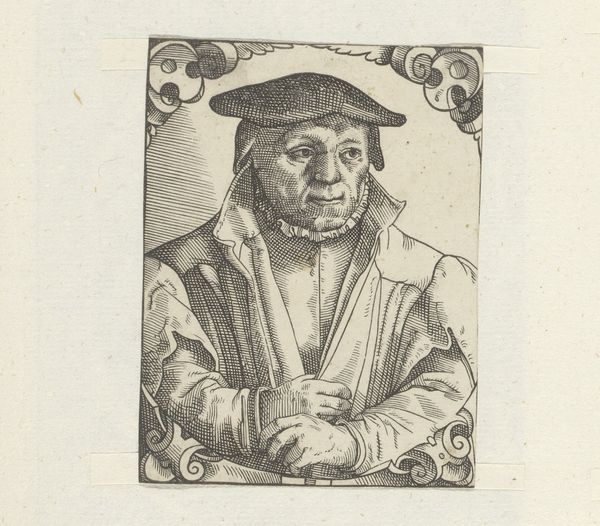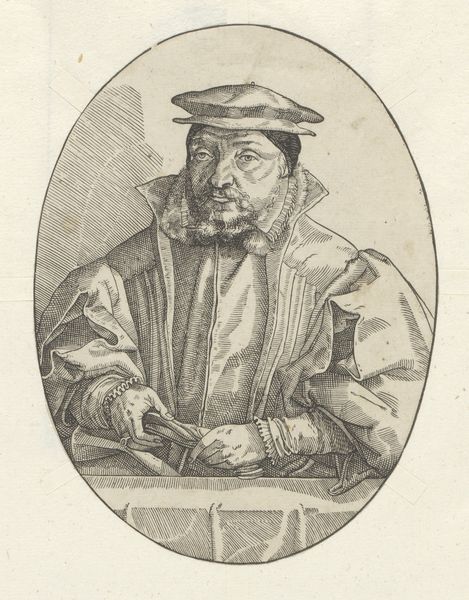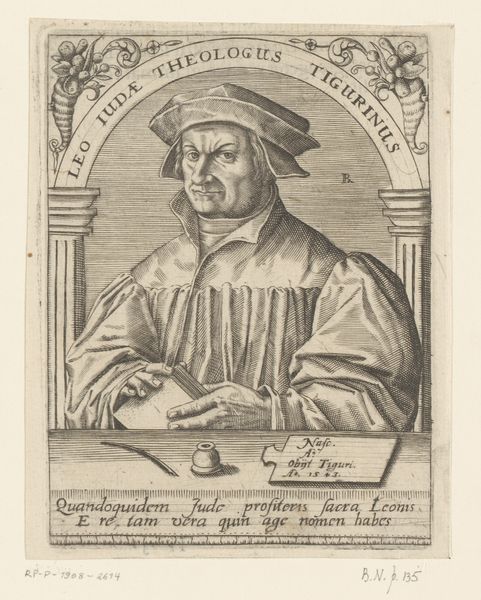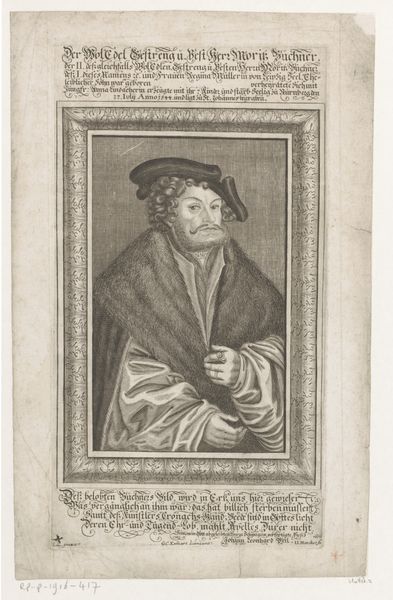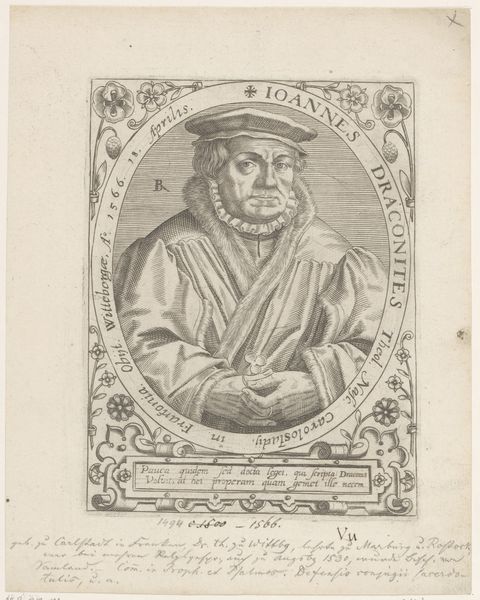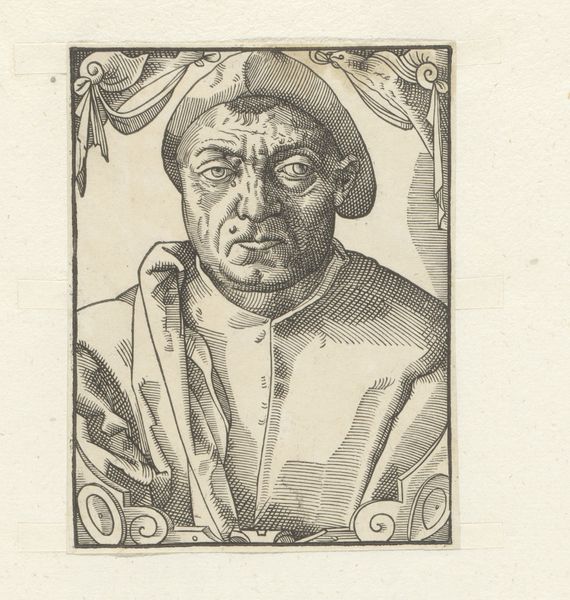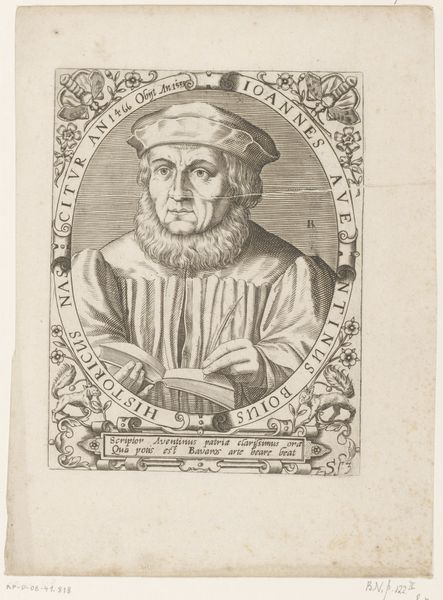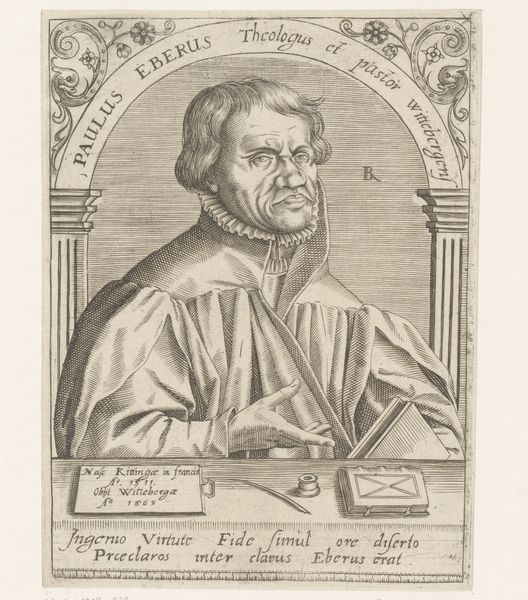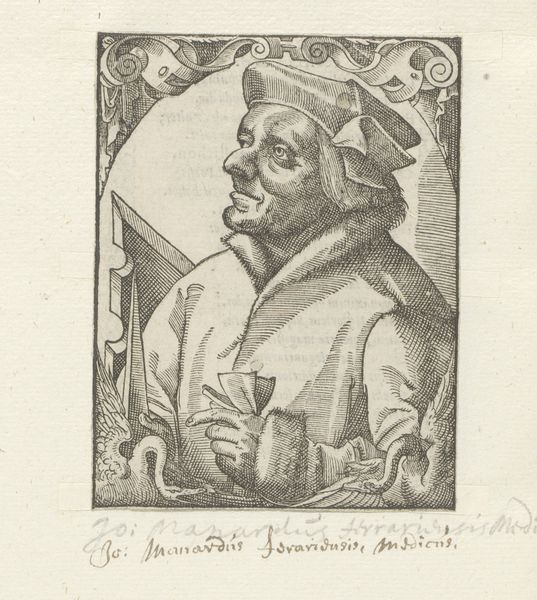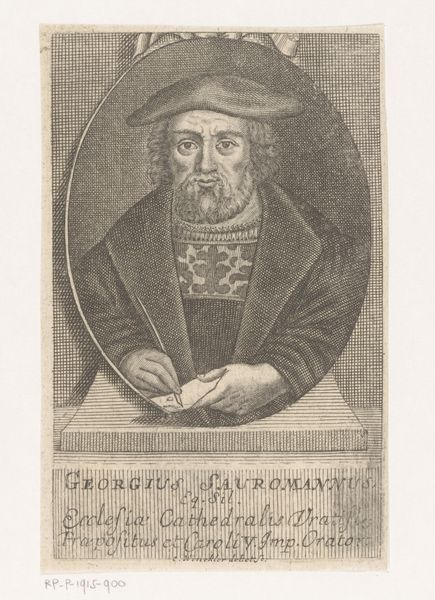
drawing, engraving
#
portrait
#
drawing
#
pen drawing
#
11_renaissance
#
northern-renaissance
#
engraving
Dimensions: height 144 mm, width 125 mm
Copyright: Rijks Museum: Open Domain
This portrait of Johannes Lonicer, made by an anonymous artist, is a testament to the artistry of engraving. The technique involves using a tool called a burin to carve lines into a metal plate, which is then inked and printed. Look closely, and you can see how the varying density of the lines creates tone and texture, from the delicate folds of his collar to the deeper shadows on his face. This highly skilled process demands precision and control. Engraving like this was essential for disseminating information and images, acting as a kind of printing press before photography. Portraits like this one served to immortalize individuals, spreading their likeness and influence. The decorative elements surrounding Lonicer—the fruits, figures, and lettering— add layers of meaning, celebrating his life and status. By appreciating the material and the making, we can better understand the cultural value placed on this image, bridging the gap between craft and fine art.
Comments
No comments
Be the first to comment and join the conversation on the ultimate creative platform.
